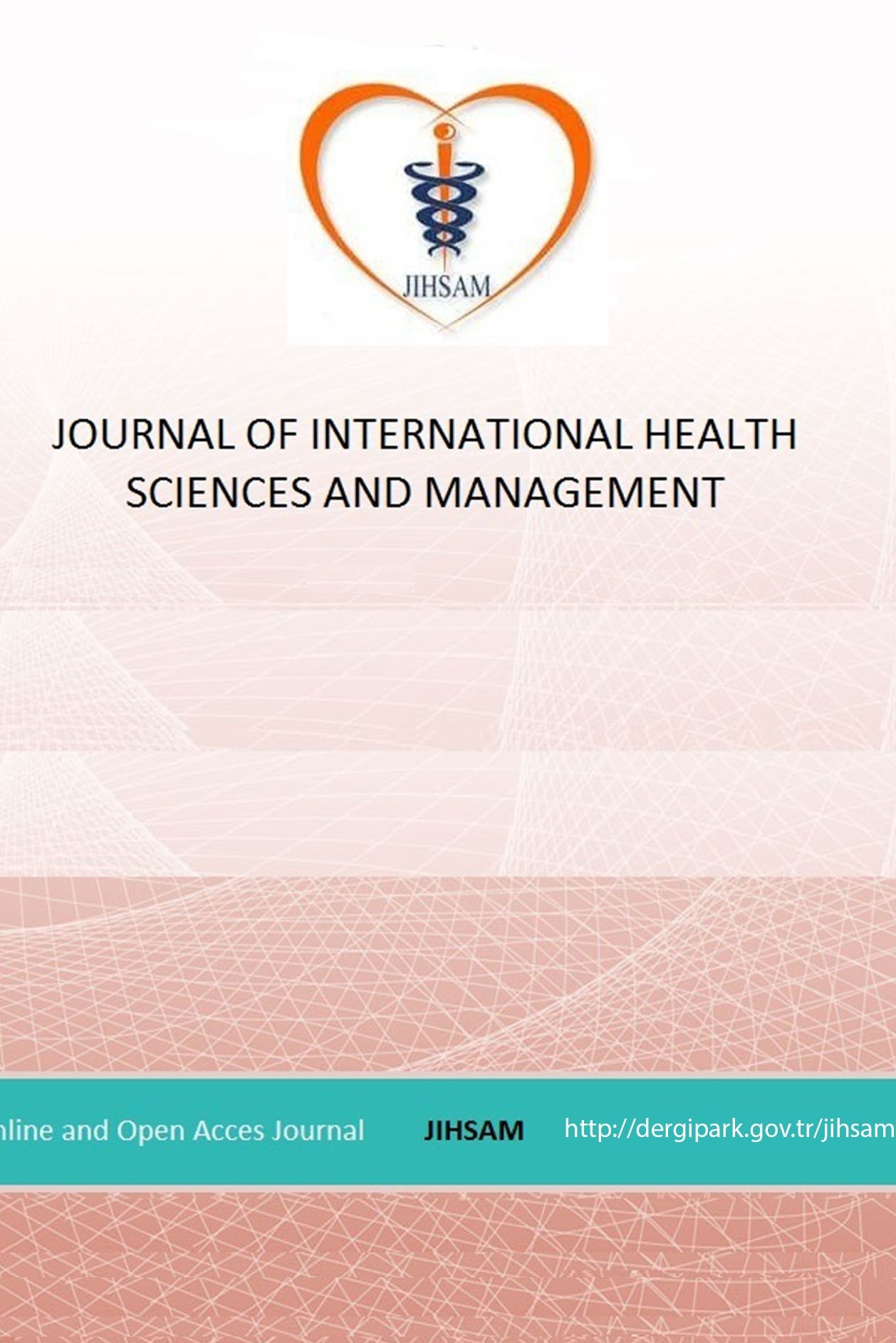FUTURIST STUDY ABOUT THE FUTURE OF HEALTH SECTOR
FUTURIST STUDY ABOUT THE FUTURE OF HEALTH SECTOR
futurism, health sector health management, technology,
___
- Aksungur, S. ve Koca, T., (2018). Fütürizm akımı bağlamında makine mühendisliğinin geleceği. Mesleki Bilimler Dergisi, 7(2): 187-196.Altay, Ö., (2011). Fütürizm Sanat Akımının Seramik Sanatı Üzerindeki Etkileri. Yüksek Lisans Tezi. Marmara Üniversitesi, Güzel Sanatlar Enstitüsü, İstanbul.Boutros, A., (2007). How to make innovation happen--Part 1. Physician Executive, 33(2): 36-41.Çiçek, H., Demirel, M. ve Onat, O. K., (2010). İşletmelerin web sitelerinin değerlendirilmesine ilişkin bir araştırma: Burdur ili örneği. Süleyman Demirel Üniversitesi İktisadi ve İdari Bilimler Fakültesi Dergisi, 15(3): 187-206.Goy, A., (2017). “What will healthcare look like in 2030?”, https://www.weforum.org/agenda/2017/04/what-will-healthcare-look-like-in-2030/, (accessed April 10, 2019).Kaçmaz, Ö., (2015). (Kitap Özeti) Mobil sağlık yeniliği: mobil öncüler için en iyi uygulamalar. Açıköğretim Uygulamaları ve Araştırmaları Dergisi, 1(3): 115-126.Kızıltepe, Z., (2017). Nitel araştırma-yöntem, teknik, analiz ve yaklaşımları. (Edt. Fatma Nevra Seggie ve Yasemin Bayyurt), içinde İçerik Analizi, ss. 253-266.Lewis-Beck, M. S., (1990). Basic content analysis (No. 49). in series editor’s introduction, Weber, R. P., pp.5-6. Sage.Mayring, P., (2004). A companion to qualitative research. (Edt. Flick, U., von Kardoff, E., ve Steinke, I.), in Qualitative content analysis. A companion to qualitative research, pp. 266-275.Sage.Porsche Consulting, (t.y.), Position paper – healthcare of the future. The digital revolution of the healthcare sector, https://www.porsche-consulting.com/fileadmin/docs/Startseite/News/tt1162/Porsche_Consulting_Studie_Healthcare_of_the_Future_EN.pdf, (accessed April 10, 2019).Thakur, R., Hsu, S. H. ve Fontenot, G., (2012). Innovation in healthcare: Issues and future trends. Journal of Business Research, 65(4): 562-569.Thimbleby, H., (2013). Technology and the future of healthcare. Journal of public health research, 2(3): 160-167.Vogenberg, F. R. ve Santilli, J., (2018). Healthcare trends for 2018. American health & drug benefits, 11(1): 48.World Health Organization (WHO), (2003). The world health report 2003: shaping the future. Yenidoğan, E. A., (2013). Kadın Giyim Tasarımının Fütürizm Sanat Akımı İle Olan İlişkisinin İncelenmesi. Yüksek Lisans Tezi. Marmara Üniversitesi, Güzel Sanatlar Enstitüsü. İstanbul.
- Yayın Aralığı: Yılda 2 Sayı
- Başlangıç: 2015
- Yayıncı: Sedat BOSTAN
FUTURIST STUDY ABOUT THE FUTURE OF HEALTH SECTOR
Ramazan ERDEM, Dilruba UĞURLUOĞLU
DELIVER PREFERENCE AND INFLUENCING FACTORS IN WOMEN GIVING BIRTH
Handan ÖZCAN, Nezihe KIZILKAYA BEJİ, Rukiye HÖBEK AKARSU
HOW DOES FATIGUE IN INDIVIDUALS WITH CHRONIC OBSTRUCTIVE PULMONARY DISEASE EFFECT DEPENDENCY STATUS
EXAMINING FACTORS THAT HAVE AN IMPACT ON HOSPITAL PREFERENCES OF UNIVERSITY STAFF
Aynur TORAMAN, Dilek KOCABAŞ, Ramazan ERDEM
BENEVOLENCE OR COMPETENCE WHICH IS MORE IMPORTANT FOR PATIENT LOYALTY?
Mahmut AKBOLAT, Mustafa AMARAT, Özgün ÜNAL, Elif Saba SÜTLÜ
PERFORMANCE ANALYSIS OF OECD COUNTRIES BASED ON HEALTH OUTCOMES AND EXPENDITURE INDICATORS
EVALUATION OF HEALTHY LIFESTYLE BEHAVIORS OF UNIVERSITY STUDENTS
Yunus Emre ÖZTÜRK, Ramazan KIRAÇ
THE IMPACT OF THE PATERNALIST LEADERSHIP ON ORGANIZATIONAL CYNICISM: A RESEARCH IN THE HEALTH SECTOR
HOSPICE-PALLIATIVE CARE INTERNATIONAL ORGANIZATIONS AND COUNTRIES
